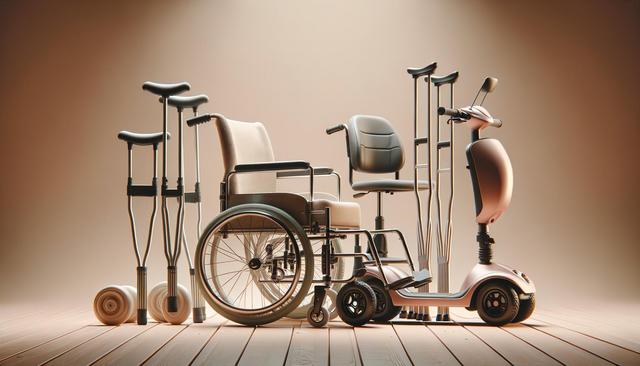Understanding the Importance of Walkers for the Elderly
As we age, maintaining mobility becomes an essential part of preserving independence and quality of life. For many seniors, walkers offer a reliable and supportive solution to move around safely. This guide to walkers for the elderly addresses the need for personalized support tools that meet individual mobility requirements. Whether recovering from surgery or managing chronic conditions like arthritis, the right walker can significantly enhance everyday functionality. Additionally, walkers help reduce the risk of falls, which are among the leading causes of injury in older adults.
Using a walker not only improves physical stability but also offers psychological reassurance. Knowing they have a dependable aid encourages older adults to stay active and engaged in social or daily activities. This proactive approach to mobility can contribute to better physical health and overall well-being.
Types of Walkers and Their Features
When considering the best mobility aids for the elderly, it’s important to understand the different types of walkers available. Each model is designed to serve specific needs, depending on the user’s level of mobility, strength, and environment. Here’s a brief overview:
- Standard Walkers: Feature four legs without wheels; ideal for users who need strong support and move at a slower pace.
- Two-Wheeled Walkers: Easier to maneuver than standard models and suitable for those who need minimal lifting.
- Rollators (Four-Wheeled Walkers): Include brakes, a seat, and a basket; offer more convenience and are great for outdoor use.
- Foldable or Lightweight Walkers: Designed for portability and ease of usage, especially helpful for travel or smaller living spaces.
Each option has its own advantages, so a thorough comparison of walker models is crucial to finding the right fit. Factors like terrain, indoor vs. outdoor use, and storage possibilities should influence the decision-making process.
What to Consider When Choosing a Walker
Before purchasing a walker, several factors should be considered to ensure it meets the user’s needs effectively. Comfort, stability, and ease of use are critical elements that influence long-term satisfaction. Here are some important considerations:
- Height Adjustability: Ensures that the user can maintain proper posture while walking.
- Weight Capacity: Must be appropriate for the user’s body weight to guarantee safety.
- Maneuverability: The walker should be easy to turn and use in tight spaces, especially indoors.
- Storage and Portability: Lightweight and practical walkers for the elderly are ideal for those who travel or need to store the device frequently.
Trying out different models before buying can help identify which one feels most natural and supportive. Consulting with a healthcare provider or physical therapist may also provide valuable guidance tailored to individual mobility needs.
Tips for Safe Mobility in Old Age
Using a walker correctly is just as important as choosing the right one. To maximize safety and confidence, seniors should follow specific usage guidelines. These tips for safe mobility in old age can help minimize risks and improve daily performance:
- Always ensure the walker is on a flat surface before use.
- Do not move too quickly; take steady, deliberate steps.
- Use appropriate footwear with non-slip soles.
- Regularly inspect the walker for wear and tear, especially on wheels and grips.
- When using a rollator, always engage the brakes when sitting or standing up.
Additionally, keeping pathways clear in the home, installing grab bars in key areas, and ensuring proper lighting can further enhance safety. Training or instruction from a physical therapist may be beneficial for first-time users to gain confidence and improve technique.
Comparing Walker Models Based on Lifestyle Needs
Conducting a thorough comparison of walker models based on lifestyle needs is vital to finding a reliable mobility aid. For instance, a senior who frequently shops or attends community events may benefit more from a rollator with a seat and storage. On the other hand, someone who mostly stays indoors might prefer a lightweight frame that’s easy to maneuver through narrow hallways.
Consider the following lifestyle-based walker features:
- Outdoor Use: Large wheels and sturdy frames are better for uneven terrain.
- Indoor Use: Compact, narrow designs are ideal for tight spaces and doorways.
- Frequent Travel: Foldable and portable models are more convenient.
- Limited Strength: Ultra-lightweight walkers reduce the effort needed to lift or move.
A user-focused approach ensures that the walker does more than just provide support—it becomes a tool that enhances independence. Reading user reviews and consulting professionals can also contribute to more informed decisions when selecting a walker.
Conclusion: Empowering Independence Through the Right Mobility Aid
Choosing a walker is more than just a functional decision—it’s an investment in independence, safety, and quality of life. With a wide range of options available, from lightweight and practical walkers for the elderly to more robust models with extra features, there’s a solution for nearly every mobility need. By understanding the types of walkers, comparing their features, and applying tips for safe mobility in old age, seniors and caregivers can make informed decisions that support long-term well-being. A thoughtful selection process helps ensure that the mobility aid truly fits the individual’s lifestyle, encourages physical activity, and promotes confidence in daily movement.




Leave a Reply